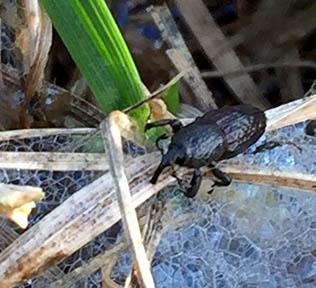First it was hot and humid, but dry to the point of no rain. Then, rain that came down in buckets across much of the eastern half of the country has provided a snapshot of turf that was lush and green, followed by dormant and brown and finally green and on the road to recovery.
 An up and down summer with stretches of drought alternating with buckets of rain likely has resulted in crabgrass intrusion in cool-season turf, says Kevin Frank, Ph.D., at Michigan State University.
An up and down summer with stretches of drought alternating with buckets of rain likely has resulted in crabgrass intrusion in cool-season turf, says Kevin Frank, Ph.D., at Michigan State University. While cool-season turfgrasses have optimum growing temperatures of about 65-75 degrees Fahrenheit, crabgrass is a summer annual that will thrive in temperatures of 80-100 F. Crabgrass can emerge in dormant areas where irrigation has been applied to avoid crown dehydration and turf death.
There are two main options for post-emergent crabgrass control in cool-season turf: quinclorac or fenoxaprop-ethyl. Both are effective for post-emergent control of crabgrass. However, there are also some key differences between these products:
> Quinclorac can boost broadleaf activity when tank-mixed with other broadleaf-specific herbicides, especially phenoxies like 2,4-D and MCPP.
> Quinclorac can provide excellent control of some broadleaf weeds, like white clover and dandelion, on its own.
> Quinclorac can miss excellent post-emergent crabgrass control when crabgrass is at the two-to-three tiller stage.
When crabgrass is small or when it is gorilla-sized, quinclorac will provide control and is safe to apply to seedlings.
> Fenoxaprop-ethyl is equally effective for post-emergent crabgrass control, though it differs from quinclorac:
> Fenoxaprop-ethyl can be applied at any crabgrass growth stage and provide control.
> Fenoxaprop-ethyl can provide better goosegrass control than quinclorac.
> Fenoxaprop-ethyl wont provide any broadleaf weed control on its own and should not be tank-mixed with phenoxy herbicides.
There are other herbicides that can provide good post-emergent control of crabgrass, such as mesotrione and topramezone. Each can be applied on the same day of seeding Kentucky bluegrass for crabgrass control during establishment, but read the label about applications on other cool-season turf species. Also, both can provide good control of some broadleaf weeds as well. There are many tank-mix options available and warranted depending on the mix of weeds that may be present in different areas.
If those dormant areas dont green up again after the rains, it might be because of insect damage, caused namely by the larvae of sod webworms or billbugs. If either is the culprit, Frank says it is too late to do anything this year, but treatment next summer might be necessary.
Like some other researchers, Frank says it might be a big year for white grubs, in particular European chafer grubs, which prefer dry turf in which to lay their eggs. Larvae will be evident by Labor Day. He suggests trichlorfon or carbaryl, both of which break down rapidly in high-pH soils, so testing and multiple applications might be necessary.

